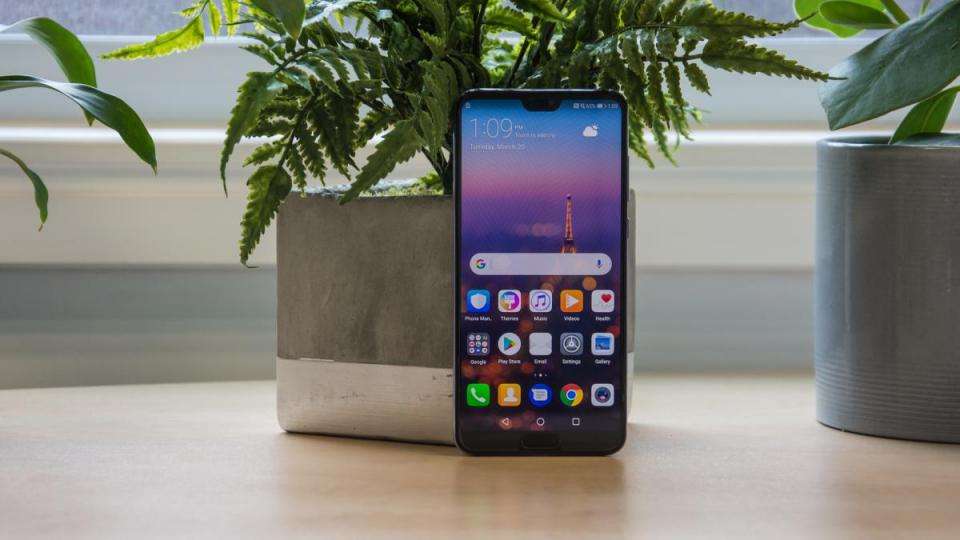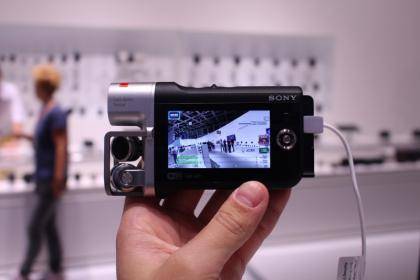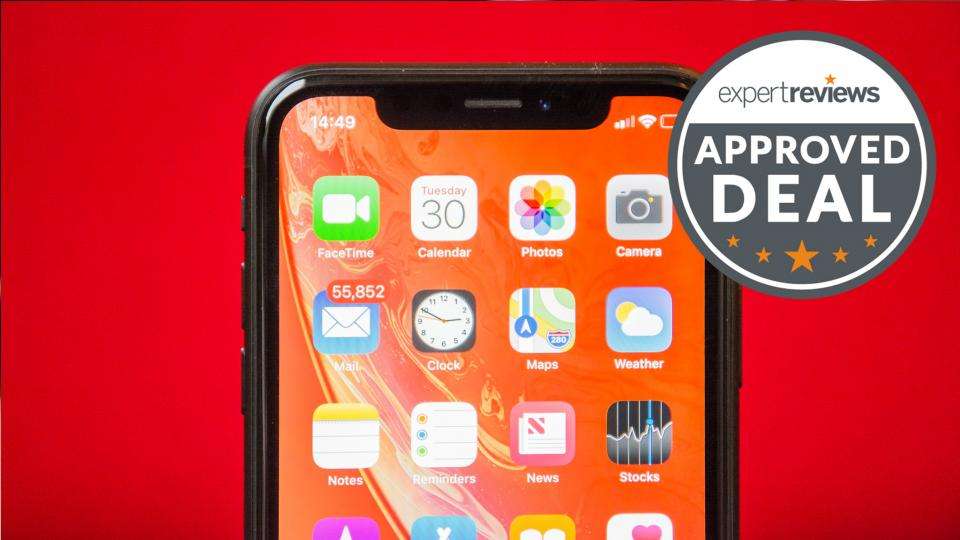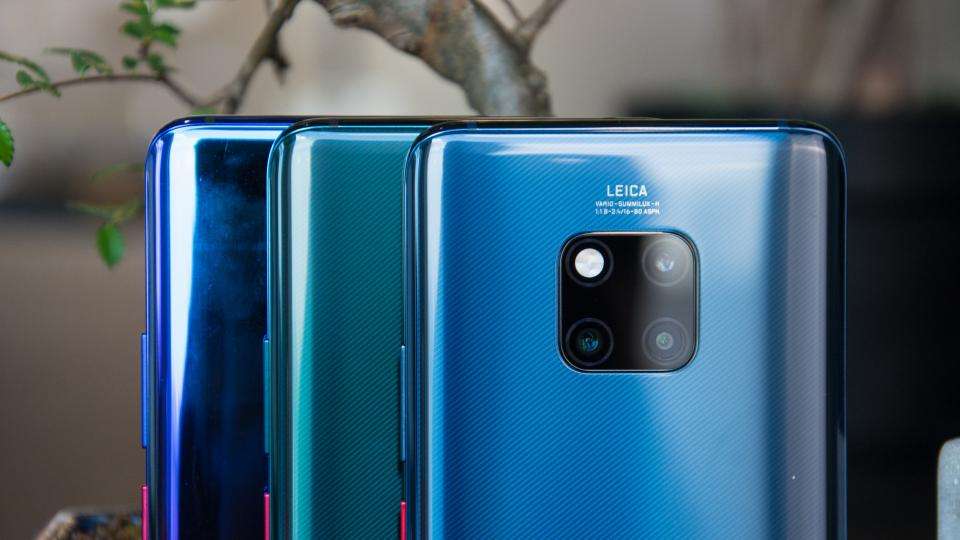iPhone 13 vs iPhone 14: Should You Upgrade?
Apple’s Far Out event has concluded, which means it’s time to figure out whether the changes introduced during the event are enough to warrant an upgrade. Compared to years past, it might not seem like you really should upgrade, but here’s our take on the iPhone 13 vs iPhone 14.

Related Reading
iPhone 13 vs iPhone 14: Spec Comparison
iPhone 13 iPhone 14 Display 6.1-inch Super Retina XDR 6.1-inch Super Retina XDR ProMotion No No Resolution 2,532 x 1,170 @ 460ppi 2,532 x 1,170 @ 460ppi True Tone Yes Yes Build Aluminum Aluminum Processor Apple A15 Bionic Apple A15 Bionic CPU Cores 6-core CPU 6-core CPU GPU Cores 4-core GPU 5-core GPU Storage 128GB, 256GB, 512GB 128GB, 256GB, 512GB IP Rating IP68 IP68 Battery Life Up to 19 hours Up to 20 hours Front Camera 12MP TrueDepth 12MP TrueDepth w/ AutoFocus Rear Cameras 12MP Wide / 12MP Ultrawide 12MP Wide / 12MP Ultrawide Connectivity 5G (Sub-6GHz / mmWave) / Gigabit LTE / Wi-Fi 6 / Bluetooth 5.0 / Ultra Wideband 5G (Sub-6GHz / mmWave) / Gigabit LTE / Wi-Fi 6 / Bluetooth 5.3 / Ultra Wideband / Emergency SOS via Satellite Colors Midnight, Starlight, Pink, Blue, Green, (Product)Red Mightnight, Starlight, Blue, Purple, (Product)Red Dimensions 5.78 x 2.82 x 0.30-inches 5.78 x 2.82 x 0.31-inches Weight 6.14 grams 6.07 grams Price $699 $799
iPhone 13 vs iPhone 14: Reasons To Upgrade
At first glance, there’s not much of a difference between the iPhone 13 vs iPhone 14. Aesthetically speaking, everything is the same across the board, including the 6.1-inch Super Retina XDR display, with the only real change coming in the way of different colors. But as you might expect, when you start diving deeper into what the iPhone 14 has to offer, the changes become much more apparent.
Better GPU and More RAM
Starting off with the processor, while it’s true Apple is using the same A15 Bionic chip from last year’s models, the iPhone 14 gets a bit of an upgrade. Gaming performance and graphical-intensive tasks should get a boost as the iPhone 14’s chip uses a 5-core GPU.
For comparison, the iPhone 13 used a 4-core GPU, and both devices are still powered by the same 6-core CPU. With mobile gaming becoming more prevalent, it was important for Apple to continue delivering incredible graphical performance on its base model iPhone.
Surprisingly, Apple added some more RAM to the iPhone 14 and iPhone 14 Plus. Now, your iPhone will have 6GB of RAM, allowing it to perform tasks more reliably, and reducing the frequency of apps needing to be reloaded when you switch back and forth. The iPhone 13 and 13 Mini sported 4GB of RAM, which is fine, but more RAM never hurts.
Improved Cameras
Easily the biggest reason to choose the iPhone 14 over the iPhone 13 is the camera hardware. On paper, it looks like Apple is using the same 12MP wide angle and ultrawide sensors, but there’s much more going on here.
For one, the primary wide-angle lens on the iPhone 14 is using a larger sensor with an f/1.5 aperture. This sensor also uses 1.9-micron pixels, which enable it to provide up to 49% improvement in low-light performance over the iPhone 13. Thanks to the upgraded Image Signal Processor, this allows Apple to introduce its “Photonic Engine”, a feature available on all four iPhone 14 models. Along with helping to improve low-light performance, this also automatically adjusts the colors that are shown whenever you snap a photo.
Cinematic Mode is getting an upgrade on the iPhone 14, for those who care, as you can now record 4K HDR video at 30fps. On the iPhone 13, this was, and still is, capped at 1080p. Action Mode is an all-new feature that vastly improves the image stabilization, essentially removing the need to use your iPhone with a gimbal when taking pictures or recording video.
No Price Hike
This one’s a bit more surprising when you look at the iPhone 14 Pro and Pro Max. But it was still nice to see that Apple did not increase prices for the iPhone 14 lineup. Of course, the iPhone 14 Plus is an all-new device with a much larger screen compared to the iPhone 13 Mini, warranting a higher price tag and a new place in the lineup. But you can still get the standard iPhone 14 for just $799, along with whatever trade-in deals or promotions are available through your carrier.
iPhone 13 vs iPhone 14: Reasons Not To
If you’re like us, chances are you are already planning on upgrading to the iPhone 14, even if you already own the iPhone 13. But if you’re on the fence, there are a couple of reasons why you might want to hang onto your iPhone 13 for a little bit longer.
Say Goodbye To The SIM Card
Now, this might not be much of an issue for those who don’t tend to switch between different devices frequently. But for the first time ever, the iPhone 14 lineup will not feature a traditional SIM card slot. Instead, all four models will rely solely on eSIM technology.
eSIM is short for Electronic SIM cards and removes the need for you to open the SIM card slot on your iPhone. Instead, set up your network connection can be done right from the Settings app on your iPhone, removing some of the potential headaches found with setting up a device.
The first iPhone to be released that used an eSIM was the iPhone XS and XS Max back in 2018. Since then, just about every new iPhone model ships with eSIM capabilities, provided that the functionality is available in your country. Other countries make use of a dual SIM card slot, wherein you actually insert two SIM cards into the same tray and can switch between them.
And while this change might not seem like it matters much, your opinion can quickly change if you travel outside of the country. Instead of just picking up a $10 SIM card to use in the country you’re visiting, you’ll have to either pay roaming fees with your existing carrier, or attempt to sign up for an eSIM after you land. It can be a bit of a headache compared to just physically taking out one SIM card and putting in another.
The iPhone 15 Will Be a Bigger Upgrade
While having the additional GPU core and more RAM, along with better low-light performance is nice, it’s really not enough. All of the fancy new features such as the Dynamic Island, Always-On Display, and the 48MP main camera upgrade are limited to the iPhone 14 Pro series. There were rumblings that the iPhone 14 would finally get ProMotion, with its variable refresh rate, but those rumors turned out to be false.
Instead, we are kind of expecting Apple to bring a more drastic upgrade to the iPhone 15 and iPhone 15 Plus next year. It wouldn’t come as a surprise if Apple brought its Dynamic Island, AOD, and ProMotion display to the non-Pro iPhones in 2023.
How the iPhone 14, 14 Plus and 14 Pro Compare to Apple’s iPhone 13 Lineup
Apple Inc.’s new iPhone 14 lineup brings, as expected, improvement in cameras, screens and processors. But the devices also pack in some new safety features and display tricks while their prices remain relatively stable.
During an event Wednesday at its headquarters in Cupertino, Calif., Apple unveiled four new iPhone models. This year, the Mini is out, replaced by the new iPhone 14 Plus, along with the more familiar iPhone 14, iPhone 14 Pro and iPhone 14 Pro Max options.
Oppo Reno 8 Pro review: A great no-nonsense phone
Oppo Reno 8 Pro MSRP $702.00 Score Details “The Oppo Reno 8 Pro's cool design, strong performance, long battery life, and fast charging make it a great value. But using anything other than the main camera disappoints.” Pros Lightweight all-glass design
Two-day battery life
Fast charging
Main camera takes lovely photos
Latest Android 13 software coming soon Cons No wireless charging
Wide-angle camera disappoints
The Oppo Reno series has been around for a few years and has previously broken new ground in the industry — a Reno was the first phone in the U.K. with 5G. The latest is the Reno 8 Pro, and it’s not what you’d call groundbreaking this time around.
Instead, the Reno 8 Pro is a competitor to the OnePlus 10T, trying to strike the same balance between price, design, performance, and desirability. OnePlus got a lot of things wrong on that phone, so can Oppo (which, don’t forget, is OnePlus’ parent brand these days) get it right?
Oppo Reno 8 Pro: design
The Reno 8 Pro is a great-looking smartphone and one you’ll be proud to carry around. Oppo has mastered the integrated camera module look on its phones (and those from OnePlus now, too), and although the camera module on the back of the Reno 8 Pro is big, the gentle curve around it minimizes its impact. It gives the phone a real identity.
It’s a good thing those curves are there because, otherwise, the Reno 8 Pro is very flat. The chassis has flat sides, the glass covering the screen is flat, and the rest of the rear panel is flat too. It’s moderately comfortable to hold (the edges are a little sharp), but the low 186-gram weight really helps avoid much fatigue. While it’s all made from glass, it is Gorilla Glass 5 on the front and back. The phone has a basic IP54 water resistance rating for a decent degree of everyday protection.
The low weight and pleasing in-hand feel have made the Reno 8 Pro wonderful to use. It has happily slipped into my pocket without a fuss and has just the right style to attract attention when it’s on show. The small bezels around the 6.7-inch AMOLED screen give it a very modern look from the front.
Previous Next 1 of 3 Andy Boxall/Digital Trends Andy Boxall/Digital Trends Andy Boxall/Digital Trends
There are two colors available: an ordinary Glazed Black model and the Glazed Green seen in our photos. It’s hard to do the color justice, as the cool, minty green looks superb in real life. It’s certainly the one to get if you don’t mind a bit of flamboyance.
Oppo Reno 8 Pro: camera
The Reno 8 Pro uses the same main camera as the Oppo Find X5 Pro, a Sony IMX766 50MP. But rather than using two, it sits next to a fairly standard 8MP wide-angle camera and a positively underwhelming 2MP camera. This makes it the same setup found on the OnePlus Nord 2T and the OnePlus 10T. On the front is a 32MP camera with autofocus, complete with some new wizardry allowing it to pull in 60% more light than previous Reno phones for nighttime selfie fun.
Oppo differentiates the Reno 8 Pro’s rear camera from the OnePlus models by adding its MariSilicon X image processing unit, which apparently improves lowlight performance in both stills and video, among other things. The IMX766 main camera does take very attractive photos, with a wonderful natural color palette, a lot of detail, and a pleasing HDR effect in the right environment.
The wide-angle suffers from the same problems as the camera on the OnePlus 10T. The low resolution means photos have noticeable pixelation, there’s visible noise in almost all images, and the poor contrast obscures detail. It’s really not very good at all. There’s a 2x digital zoom shortcut, but use this at your peril because it employs a huge amount of smoothing, making photos look artificial.
Previous Next 1 of 14 Andy Boxall/Digital Trends Wide-angle Andy Boxall/Digital Trends Andy Boxall/Digital Trends Andy Boxall/Digital Trends Andy Boxall/Digital Trends Andy Boxall/Digital Trends Portrait mode Andy Boxall/Digital Trends Night mode Andy Boxall/Digital Trends Night mode Andy Boxall/Digital Trends Andy Boxall/Digital Trends Andy Boxall/Digital Trends Night mode Andy Boxall/Digital Trends Portrait mode Andy Boxall/Digital Trends Portrait mode Andy Boxall/Digital Trends
What about the selfie camera? It’s not bad at all. There’s a good level of detail, autofocus helps the portrait mode with accuracy, skin tones are warm, and there’s a handy palm recognition gesture too. At night, which is where the MariSilicon X ISP is supposed to work its magic, the phone automatically uses the screen as a fill light — resulting in surprisingly detailed selfies even in the dark. If you use it without the screen’s fill light, the results are useless
Lowlight photos, in general, are good. However, I have noticed it’s easy to introduce blur, despite the software only taking about a second to snap a photo in the dark. You can see an example in the gallery above. The Reno 8 Pro’s camera is otherwise the same as the OnePlus 10T’s, where the main camera shines by taking really eye-catching photos, but the other cameras fail to stand out due to low resolution and a lack of detail.
Oppo Reno 8 Pro: performance and software
The main camera is good, the front camera takes nice-looking selfies, and the phone has a pretty design, but it’s the processor that I found intriguing. The Reno 8 Pro has MediaTek’s Dimensity 8100+ chip with 8GB of RAM inside, and it has been a really strong performer. It seems to be adept at sipping power when it’s not working hard, so the battery life from the relatively small 4,500mAh battery has been decent in general use situations. Playing Asphalt 9: Legends is no issue, even during the long, chaotic races. During these intense gaming sessions, there’s almost no heat buildup on the back of the phone at all.
Oppo’s ColorOS 12.1 based on Android 12 is installed, and it’s the same experience as you get on the Oppo Find X5 Pro, which you can read more about in our full Find X5 Pro review. It’s also very similar to the software on the OnePlus 10 Pro. While fast and reliable, ColorOS loves to interrupt with many system notifications and can be aggressive with power management, meaning a lot of features like the always-on screen are off by default and require setting up before use.
It has been a fuss-free time with the Reno 8 Pro, and that’s exactly what I want.
The 6.7-inch AMOLED screen has masses of color and really strong contrast levels, so it’s always eye-catching, and that’s without the color boost enhancer mode switched on. Dig into the settings, and there are ways to calm the screen down if you don’t like the vibrant visuals. Watching video is enhanced by the great stereo speakers, which may not have much bass but make up for it with lovely clarity.
Previous Next 1 of 5 Andy Boxall/Digital Trends Andy Boxall/Digital Trends One-handed mode Andy Boxall/Digital Trends Andy Boxall/Digital Trends Andy Boxall/Digital Trends
It has been a fuss-free time with the Reno 8 Pro, and that’s exactly what I want from an everyday, jack-of-all-trades phone. The software is still annoying for the first few days, and it irritates me with its constant “this app is using power” reminders until I tell it to stop. But with luck, some of this will be fixed with Android 13-based ColorOS 13, which is scheduled to arrive on the Reno 8 Pro in September.
Oppo Reno 8 Pro: battery and charging
After using social media, messages, a few apps, and notifications, plus taking photos and being connected to a smartwatch, the battery in the Reno 8 Pro has easily lasted for two days before it needs a recharge. Work the phone harder, and you won’t reach this. Expect around 10% of the battery to disappear after 30 minutes of gaming.
The phone uses Oppo’s 80-watt SuperVOOC fast charging system, and in just 11 minutes, the battery reaches 50% charge. In 30 minutes, it’s completely full. Rather than the camera or design being the main reasons to buy — they’re great, but hardly unique in the world of midrange phones today — the performance, battery life, and fast charging are far more beneficial and relevant during everyday use. The results are in line with Oppo’s claims, which is great. The lack of wireless charging isn’t so good, though.
Even if you do stretch the limits of the battery, the fast-charging system means — provided you’re near a wall socket and have the proprietary charger and cable — the phone shouldn’t ever be left with no charge at the end of the busiest days. Charging a phone in 30 minutes also means saying goodbye to overnight charging. If you’ve never tried a phone with charging as fast as this before, it can change your life.
Oppo Reno 8 Pro: price and availability
The Oppo Reno 8 Pro is available in the U.K. starting September 1 for 599 pounds, which is around $702. You can buy it through Oppo’s own online store or a variety of retail stores, including Amazon, Argos, and Currys, plus networks including EE, O2, and Vodafone.
If you’re tempted, then it’s worth buying before September 28, as Oppo will send you an Oppo Pad Air tablet (worth 239 pounds) for free with your Reno 8 Pro purchase, making the phone a really great value.
Oppo does not sell its smartphones in the U.S., so you’d have to import the Reno 8 Pro if you’re really keen on owning one.
This, or the OnePlus 10T?
The Oppo Reno 8 Pro costs a little less than the OnePlus 10T, and the primary difference between them is the OnePlus phone has a Qualcomm Snapdragon 8+ Gen 1 processor and slightly faster charging. While the Snapdragon chip in the OnePlus is undeniably excellent, I’ve had no problem with the MediaTek 8100+ here, and unless you’re set on playing intensive games for hours, I doubt most will notice much difference day-to-day.
If your only choice is between the Reno 8 Pro and the OnePlus 10T, then the Oppo phone is the one to buy. It’s a little cheaper, the materials used are far higher quality, the design is prettier, it charges almost as fast, and the software is basically the same. The difference is the processor, and considering the rest of the OnePlus 10T isn’t as desirable as the Reno 8 Pro, it’s not really worth it.
Expand your choices further, and the even cheaper Nothing Phone 1 should be considered along with the Samsung Galaxy A53 5G. In the U.S., the new Motorola Edge (2022) is good value and has a MediaTek processor with a mmWave 5G connection for longevity. The other phone to consider, should you be in a place where it’s available to buy, is the iQoo 9T, which manages to be even better than the OnePlus 10T and the Reno 8 Pro.
I’ve enjoyed using the Reno 8 Pro. It’s an attractive, capable, no-nonsense smartphone. The price isn’t crazy, but the phone manages to feel more expensive than it actually is. That’s where the OnePlus 10T got it wrong, as it managed to go in the opposite direction.
Editors' Recommendations






Leave a Reply